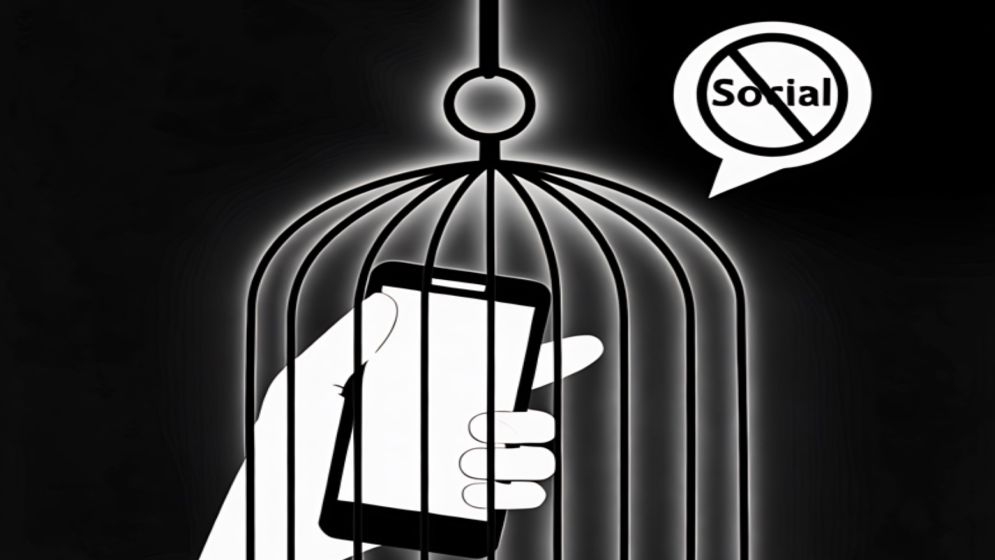Muradnagar and Rangabali show what happens when social-media based propaganda replaces facts and give quick verdict

Over the weekend, two disturbing incidents–one in Muradnagar upazila of Cumilla and the other in Rangabali upazila of Patuakhali–ignited outrage across social media platforms.
But the frenzy, particularly around the Muradnagar case, has outpaced the facts. As narratives calcify online, nuance is the first casualty.
Let’s take a closer look at what is actually known about Muradnagar.
The incident, which reportedly occurred Thursday, erupted into national discourse two days later, following a report from Kaler Kantho newspaper. What followed was a digital avalanche: posts, shares, outrage.
The viral headline was unambiguous–and deeply incendiary: “A BNP leader broke into a Hindu woman’s house and raped her.” The politics of it were almost too convenient.
But the full picture is messier, more uncomfortable, and laden with competing versions of events. Based on multiple accounts, what happened may not fit neatly into the frame social media has imposed.
Here’s what we do know with certainty: the woman was filmed naked–of course without her consent–and those recordings were spread online. That alone constitutes a grave criminal act.
Regardless of any other aspect of the case–whether rape occurred, or the nature of the relationship between the parties–the digital dissemination of her nude images is a brutal, clear-cut offense.
Under Bangladesh’s cybercrime laws, those responsible must be held accountable. Full stop.
Now, the central allegation–rape–is not so easily substantiated. Multiple sources suggest this may not have been a case of violent assault, but of a complex, consensual, and ultimately exploitative relationship that spiraled into coercion and humiliation.
According to reports, the woman is the wife of an expatriate. During her husband's absence, she is said to have entered into a romantic relationship with one man, and later developed a parallel connection with his younger brother–or possibly cousin, sources I talked with didn’t confirm fully.
The dynamics became toxic. Money was borrowed. Expectations mounted. Control shifted.
And in the end, the younger brother—possibly motivated by jealousy or moral outrage—barged into the woman’s home with others, allegedly caught the pair in a compromising situation, and orchestrated the filming of her naked, vulnerable, and terrified.
What followed was vigilante justice, masquerading as moral policing, executed through the most brutal and irreversible means of public shaming: viral nudity. That, not the original allegation, is the true horror here.

Trial by social media
Two days after the initial uproar, police moved in. The man at the center of the Muradnagar case has been arrested on rape charges. I’ll refer to him as the accused–not a rapist–because, in any society that claims to uphold the rule of law, guilt must be proven, not presumed.
The younger brother who recorded the nude footage, along with three others involved in the act of filming and dissemination, were also taken into custody.
Justice must not only be demanded–it must be methodical. We live in an age where forensic evidence can speak volumes. If the Criminal Investigation Department (CID) takes the matter seriously, a range of medical and scientific tools can determine whether a rape did, in fact, take place.
Until those results come in, moral certainty is premature. But let me be clear: if it is rape, then the punishment must be uncompromising–maximum sentencing through a fair trial, not a kangaroo court masquerading as justice.
However, this incident, troubling enough on its own, was further muddied by how it was weaponized online in two distinct ways.
First, it was cast in communal terms. The woman’s identity as a Hindu was foregrounded to frame the assault as a grim power play between majority and minority—an insidious, ongoing narrative in South Asian politics.
While communal identity should have no place in matters of justice, this framing fanned the flames of outrage and shifted the discussion from the victim’s trauma to communal grievance.
Second, it was politicized. The accused was swiftly labeled a BNP leader–an attempt, it seems, to feed into a ready-made villain narrative.
But the facts complicate that story: the accused has past affiliations with the ruling Awami League, and his younger brother is a known member of the Chhatra League.
The BNP connection appears more fiction than fact, dragged in to score political points on social media. In the end, everyone loses when justice is reduced to a party badge.
Then came the second firestorm—this time from Rangabali upazila in Patuakhali.
At the heart of this incident was a series of desperate Facebook posts from a man named Kamal Gazi. One message read like a real-time emergency:
“BNP people are killing my beloved wife at my house. Please save my family.”
Within minutes, another post surfaced with a disturbing video of a woman being dragged away violently—captioned with pleas for help and location coordinates. The internet responded with predictable urgency: the video went viral, accumulating millions of views and triggering yet another storm of accusations and commentary.
But when the dust settled and the facts were investigated, the story unraveled.

How truths were obscured
Kamal Gazi, far from being a helpless civilian, is a local Chhatra League leader–part of the ruling party’s now-banned student wing. He had recently married the woman in question, reportedly in secret and without informing her family.
After weeks of his disappearance, her relatives discovered her whereabouts and attempted to take her back, forcibly if necessary. The viral video didn’t capture the context—only the chaos.
So, in both cases—Muradnagar and Rangabali—social media served as judge, jury, and executioner long before any facts were verified. We’re living through an age of instant outrage and collapsing nuance, where narrative too often trumps evidence.
Strip away the theatrics, and the Rangabali case amounts to a personal crisis—a domestic dispute between a newly married couple and the woman’s disapproving family.
Yet in the hands of Kamal Gazi, a politically connected figure, this private turmoil was repackaged into a public emergency. His posts, now partially deleted, accused unnamed BNP operatives of abduction and assault.
Screenshots tell the real story: this wasn’t a call for justice—it was a cynical attempt to manufacture political victimhood.
And that brings us to the heart of the matter.
Across both Muradnagar and Rangabali, what we’ve witnessed is not simply the failure of individuals, but the reckless misuse of pain for political gain.
In both cases, complex human situations—one involving allegations of sexual violence and another rooted in familial strife—were sensationalized, stripped of context, and injected with partisan venom. And the consequences are far from trivial.
When political operatives and complicit media outlets exploit these incidents for propaganda, they don’t just mislead—they corrode the public’s ability to trust any narrative, even when the next one turns out to be true.
If every accusation becomes suspect, then actual victims—of rape, of political violence, of coercion—are left to suffer in silence, disbelieved and discarded.
This erosion of credibility is not an accident. It is a calculated strategy: to flood the public square with so much disinformation that truth becomes indistinguishable from fiction.
The result? A justice system warped by pressure and public opinion, and a citizenry too jaded to respond when real injustices occur.
If we’re serious about protecting victims, then we must also hold accountable those who exploit them for political theater. That includes the media outlets who knowingly peddle disinformation, distort facts, and inflame public sentiment for partisan ends.
Sensationalism is not journalism. Propaganda is not justice. And political gamesmanship has no place in the stories of people whose lives are already unraveling.
—
Saiyed Abdullah is a law graduate and social media based activist who believes in the power of community journalism

